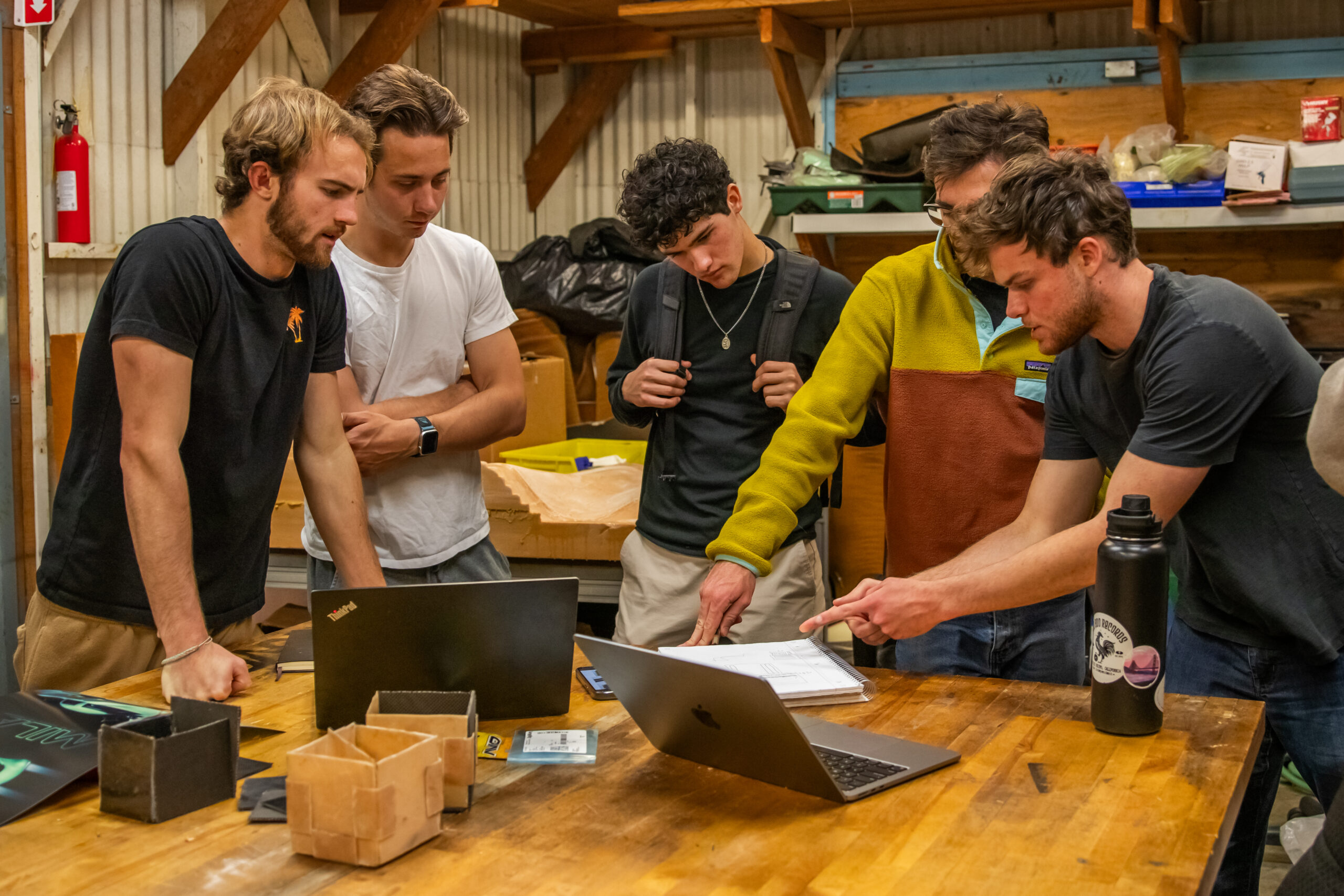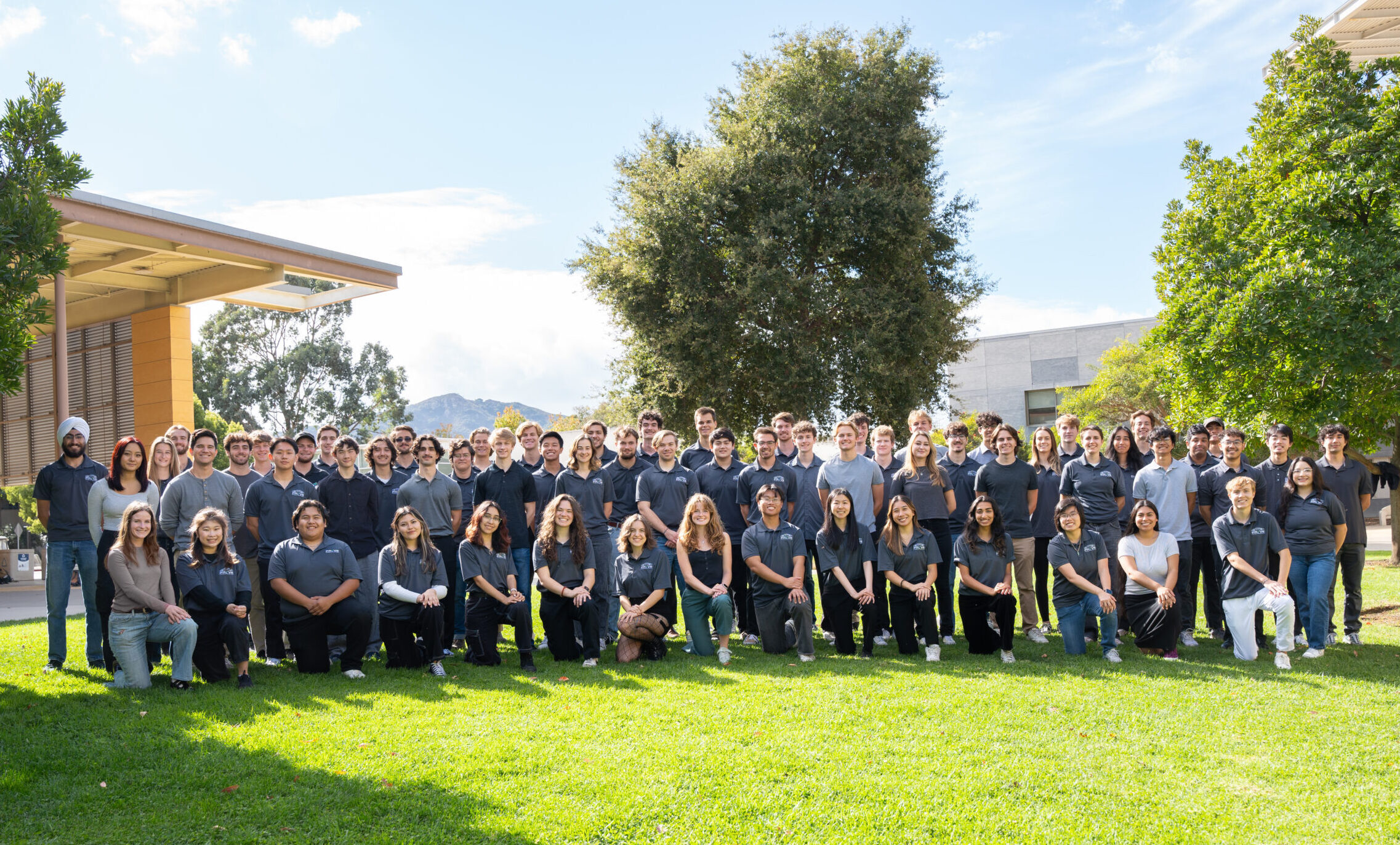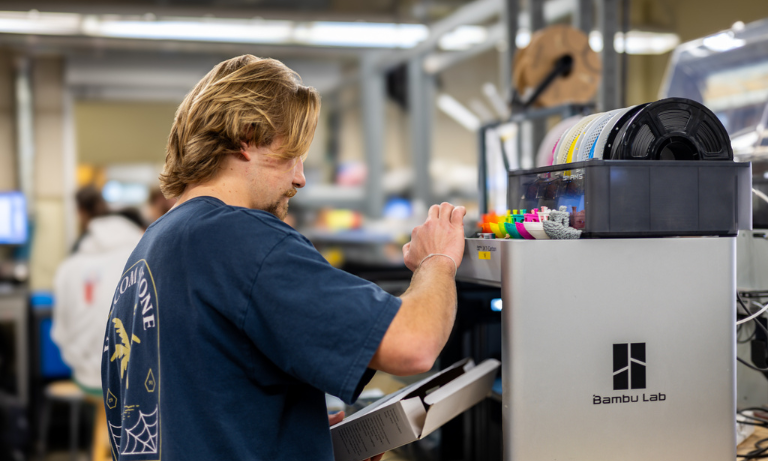Cal Poly’s Prototype Vehicles Laboratory was born from the bold vision of a handful of students who recognized the untapped potential of alternative energy.
Starting small, the PROVE Lab has since grown into a dynamic organization focused on collaborating as a cross-functional team to design, build, test and market groundbreaking prototype vehicles.
Following the success of their flagship project, Dawn – a purely solar-powered car designed to travel at speeds exceeding 65 mph – the team set their signs on an even more ambitious goal: Mila – a fully electric, long-range sports car, engineered to travel over 1,000 miles on a single charge.
“We are a group of students building a car from scratch. It’s really impressive,” said Max Schecter, a second-year mechanical engineering major.
Schecter, Anthony Ferrell and Sinchana Shivaprasad serve as project managers for the student-run nonprofit organization, which now draws between 80 and 100 students from various majors primarily in the College of Engineering. Under their leadership, PROVE has made significant strides and is on the verge of a breakthrough.
Eight years after its founding, PROVE members are preparing to drive Mila for the first time.
“We’ve had eight years of various people contributing to our vehicles, continuously making improvements,” Schecter said. “Paving new paths has come to define us.”

Challenges have continuously tested the team, giving the innovative nature of their work and the high goals they set for themselves.
While attempting to break a record with their solar-powered car, Dawn, they fell just 5 mph short.
More recently, the team aimed to set a Guinness World Record with their electric sports car, Mila, for the longest distance traveled on a single charge. However, this fall, a college team in Germany claimed that record with their tiny, single-seater prototype, traveling over 1,500 miles on a single charge.
Despite this, PROVE members remain undaunted.
“Setbacks are expected, and competition is part of the journey,” said Anthony Ferrell, a project manager and second-year materials engineering major. “Our vehicle ended up being a much larger project, focusing on combining range with the functionality of a two-seater sports car.”
Mila will be powered by a substantial battery pack of over 7,000 lithium-ion cells, taking up much of the car’s volume. The vehicle includes a robust steel space frame chassis for driver and passenger safety, student-designed hydraulic disk brakes, rack and pinion steering and advanced suspension systems, all enclosed in a distinctive carbon fiber aerodynamic body to optimize performance.
They recently reached a milestone by completing a rolling chassis – a key step toward achieving a fully operational driving chassis. Although they had expected to be driving Mila by now, motor damage set the project back by a quarter.
Ferrell, who is CNC-certified, has been dedicating extra time to make the necessary repairs and get the team back on track.
“Look at it this way,” Schecter said, teasing Ferrell. “It’s another opportunity for learning!”
Schecter and Ferrell, who lived in the same dorm during their freshman year, joined PROVE to build a fully developed vehicle in a dynamic, fast-paced environment that mirrors a startup.
“We have active, dedicated members who are eager to build something new, which has fostered a strong, united culture within the club,” Ferrell said.

Members work across five subteams: Mechanical, High Voltage, Low Voltage, Aeroshell and Business. The club welcomes students from all majors, colleges and backgrounds, creating a diverse and inclusive environment.
Now in her third year, Shivaprasad joined PROVE’s Business team during her second year as a computer science major. Despite knowing little about cars, she later moved to the Low Voltage team and quickly became passionate about the work.
“I am a big fan of networking, but also embedded systems and apps, so that enabled me to contribute to the team in several ways,” Shivaprasad said.
Last summer, she interned at Boeing as a data analytics intern and will return this summer as a software engineering intern specializing in machine learning operations.
“PROVE has given me a significant return on investment,” she said. “I’ve learned so much about the industry, and it’s rewarding to be involved in a tangible project, not just typing on a computer.”
The PROVE team remains committed to their mission of traveling 1,000 miles on a single charge and is closer than ever. Members are diligently working on getting the motor running, setting up safety parameters and aiming to carry out their feat by the fall.
“Members across all teams are putting in hard work to create a fully developed vehicle,” Ferrell said. “Our goal is to drive a really cool car.”
For more information about PROVE Lab, visit here.
By Emily Slater



